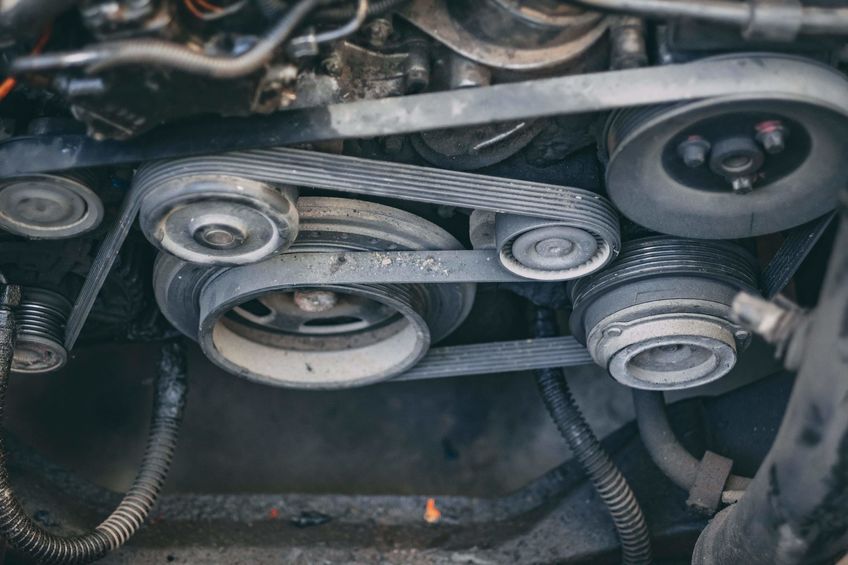Have you seen a bike with its chain that helps make sure the wheels turn and the bike moves forward? Now imagine a bike chain but it’s inside your car and called a timing belt. This is the belt that keeps all internal moving parts of an engine in sync. Obviously, it needs to be working well for your car to be moving as intended.
An Overview of Timing Belts
Specifically, a timing belt is made of rubber and has hard teeth interlocking with cogwheels of a car’s crankshaft and the camshafts. The belt helps ensure that engine intake and exhaust valves open and close in time with the pistons. Ultimately, a good timing belt makes sure the crankshaft and camshafts are operating in unison so the car runs. It also sometimes powers the car’s water, oil and injection pumps, so it’s important.
Timing belts typically last between 60,000 and 100,000 miles, so if your car is well-used and getting older, it might be time for a new timing belt simply because your belt is coming to the end of its useful life. Remember, rubber wears down over time. If and when your rubber timing belt breaks, your engine will not run. A “bad” belt can lead to not only engine failure but also broken/bent valves, cylinder head/camshaft damage, and/or piston/cylinder wall damage.
How might you know your car needs a new timing belt? Well, there are several signs to look for, including decreased engine power, overheating, the car vibrating/shaking, trouble starting the car, rubbing/squealing noises coming from the belt(s), the engine making a ticking noise, leaking oil and/or the check engine list is on.
Replacing a timing belt takes between 4 and 8 hours– it’s usually a labor-intensive process. Should you suspect your timing belt is wearing out, or you know for sure it has broken, you can make an appointment at AV Bumper-to-Bumper in Lancaster, CA, to get it replaced. Please call 661-949-1999 to schedule your timing belt service appointment.





